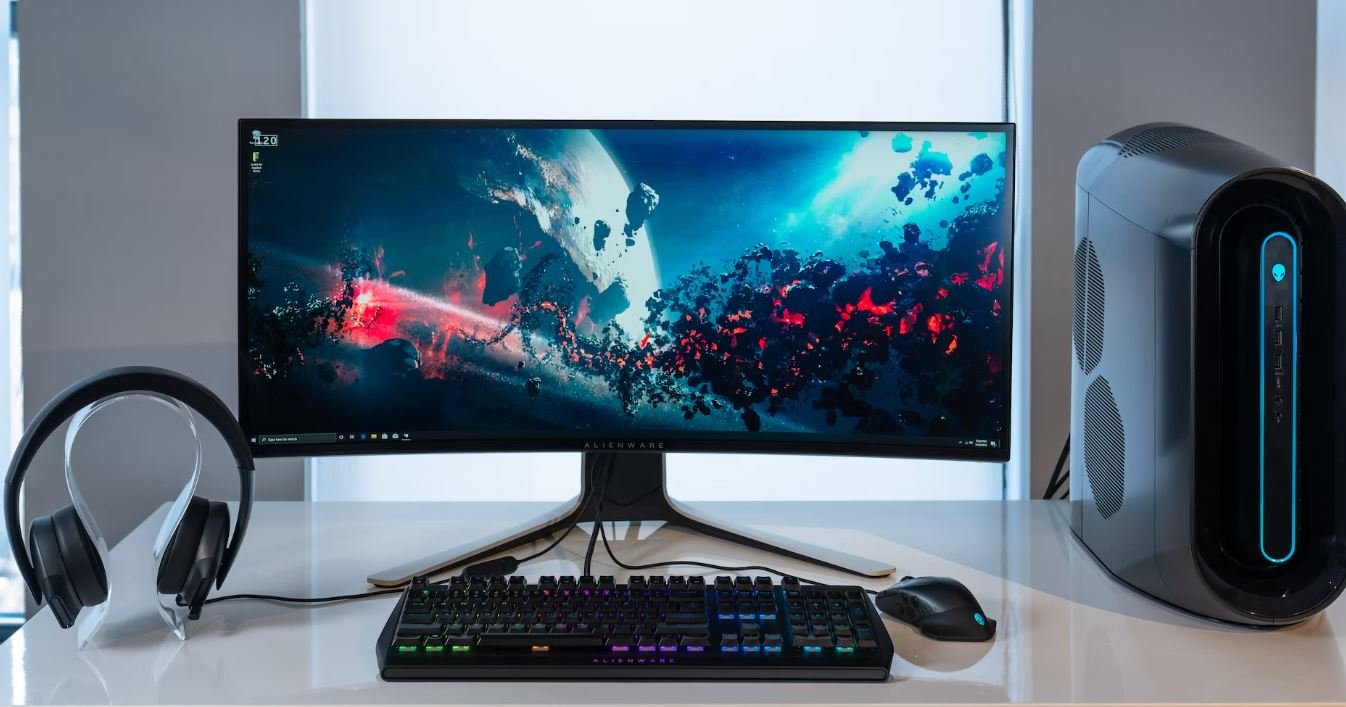What’s Generative Music
Generative music is a unique approach to creating music that is characterized by algorithms and systems that produce sounds and melodies. Unlike traditional music composition, which is often driven by human creativity and expression, generative music is created through computational methods. This article will explore the key concepts and applications of generative music, as well as its impact on the music industry.
Key Takeaways:
- Generative music is created through algorithms and computational systems.
- It is characterized by its ability to produce unique and ever-evolving music.
- Generative music has a wide range of applications in various industries, including gaming and relaxation therapy.
Generative music employs mathematical formulas and algorithms to produce music that continuously evolves and changes over time. *This dynamic aspect allows for infinite variations and surprises in the music created, making it an intriguing and captivating form of artistic expression.
One interesting aspect of generative music is its ability to adapt to different environments and contexts. Through real-time data inputs, generative music can respond to external factors such as weather conditions or audience reactions, creating a truly immersive and interactive musical experience. *This adaptability opens up possibilities for generative music in various settings, including live performances and interactive installations.
An Overview of Generative Music
At its core, generative music relies on algorithms that define patterns and rules to generate sound. These algorithms can range from simple mathematical equations to complex machine learning models. *By defining these rules, composers and artists can guide the system to create music that aligns with their artistic vision.
Generative music often involves combining different layers and elements of sound to create a rich and textured musical landscape. These layers can interact with each other, generating diverse melodies, rhythms, and harmonies. *This complexity allows for the creation of unique and unpredictable musical compositions.
Applications of Generative Music
Generative music has found several applications across industries, expanding beyond the realm of traditional music composition:
- **Gaming**: In video games, generative music can adapt to the gameplay, enhancing the immersive experience and creating unique soundtracks that respond to player actions.
- **Relaxation Therapy**: Generative music is often used in relaxation therapy sessions to induce a calming and meditative state. The continuous evolution of the music helps in creating a soothing environment.
- **Art Installations**: Generative music can be integrated into interactive art installations, creating a multisensory experience for viewers.
Generative Music in the Music Industry
The music industry has embraced generative music as a new and innovative approach to composition and performance:
- **Experimental Composition**: Generative music provides composers with a different perspective on music creation, pushing the boundaries of traditional composition techniques.
- **Live Performances**: Musicians incorporate generative music in their live performances, enabling real-time improvisation and sonic exploration.
- **Music Production**: Generative music software and tools are increasingly used in music production, offering musicians new avenues for creativity and experimentation.
Generative Music in Numbers
| Year | Number of Generative Music Albums Released |
|---|---|
| 2015 | 20 |
| 2016 | 35 |
| 2017 | 45 |
| Top Genres of Generative Music | Percentage of Albums |
|---|---|
| Ambient | 30% |
| Electronic | 25% |
| Experimental | 20% |
| Benefits of Generative Music in Therapy |
|---|
| – Reduces stress levels |
| – Promotes focus and concentration |
| – Aids in relaxation and meditation |
*Generative music presents a world of possibilities for musicians, composers, and listeners alike. Its dynamic nature and ability to adapt make it an exciting frontier in the evolution of music.

Common Misconceptions
Generative Music is Just Random
One common misconception about generative music is that it is solely random or chaotic. However, this is not true. Generative music is created through algorithms and rules that determine the composition and sequencing of musical elements. It is a controlled process that aims to produce unique and evolving musical pieces.
- Generative music compositions follow specific algorithms and rules.
- Elements of randomness are often incorporated into generative music to add an element of surprise.
- Generative music can be highly structured and organized, despite being created algorithmically.
Generative Music is Not Composed by Humans
Another misconception is that generative music is entirely computer-generated without any human involvement. In reality, generative music is often a collaboration between humans and algorithms. Human creators design the algorithms and set the parameters, allowing the software to generate music within those guidelines. The human element remains essential in curating and refining the output of generative music.
- Human creators design the algorithms and set the parameters for generative music.
- Generative music is an example of humans leveraging technology to expand creative possibilities.
- Human involvement is crucial in curating and refining the output of generative music.
Generative Music is Ambient or Background Noise
It is a misconception to consider generative music only as ambient or background noise. While generative music can certainly be used for creating atmospheric and ambient compositions, it can also be versatile and suit different musical styles and genres. Generative music has been employed in various genres like classical, electronic, and experimental music.
- Generative music can be employed in various musical genres and not limited to ambient compositions.
- It can be used to generate melodies, harmonies, and rhythms that fit different musical styles.
- Generative music can be dynamic and engaging, capturing the listener’s attention rather than being mere background noise.
Generative Music is Easy to Create
While generative music can be created using software and algorithms, it is not necessarily an effortless process. Contrary to the misconception that generative music is easy to create, it requires a deep understanding of music theory, composition, and programming skills. Developing effective algorithms and achieving desired results can take time and expertise.
- Creating effective generative music requires a solid understanding of music theory and composition.
- Programming skills are essential for designing the algorithms and implementing them in software.
- Experimentation and refinement are often necessary to achieve the desired musical output.
Generative Music is Repetitive and Monotonous
Some people mistakenly believe that generative music is monotonous and repetitive. While repetition can be a part of generative music, it is not its defining characteristic. The algorithms used in generative music are designed to produce variation and evolution over time, creating unique and unpredictable musical experiences.
- Generative music aims to create evolving and dynamic musical compositions.
- Repetition is often employed strategically to establish themes or motifs in generative music.
- The variation and unpredictability in generative music make it inherently non-repetitive.

What’s Generative Music
Generative music is a form of music that is created through a set of rules and parameters rather than being composed by an individual. It uses algorithms and randomization to generate new musical patterns, melodies, and rhythms. This article explores various aspects of generative music and its applications.
Artists Utilizing Generative Music
Several notable musicians and composers have embraced generative music as a means of creative expression. The table below highlights some renowned artists and their notable works in the realm of generative music.
| Artist | Notable Work |
|---|---|
| Aphex Twin | Selected Ambient Works Volume II |
| Brian Eno | Music for Airports |
| Alva Noto | Xerrox |
| Holly Herndon | PROTO |
| Steve Reich | It’s Gonna Rain |
Applications of Generative Music
Generative music finds applications in various domains, ranging from interactive installations to therapeutic practices. The following table provides insight into the diverse uses of generative music.
| Domain | Application |
|---|---|
| Art | Interactive sound installations |
| Video Games | Dynamic and adaptive soundtracks |
| Meditation | Ambient music generation for relaxation |
| Advertising | Background music for commercials |
| Therapy | Soundscapes for stress reduction |
Generative Music Algorithms
The creation of generative music relies on various algorithms and techniques. The table below explores some commonly used algorithms in generative music composition.
| Algorithm | Description |
|---|---|
| Markov Chains | Probabilistic model for generating sequences based on previous states |
| Cellular Automata | Grid-based system where patterns evolve based on neighboring states |
| L-Systems | Symbolic rewriting system to create complex and self-replicating patterns |
| Neural Networks | Computational models that learn from data to generate music |
| Fractal Geometry | Recursive geometric patterns with self-similarity at various scales |
Generative Music vs. Traditional Composition
Comparing generative music to traditional composition offers insight into their differences and unique characteristics. The following table highlights key distinctions between the two approaches.
| Aspect | Generative Music | Traditional Composition |
|---|---|---|
| Authorship | Algorithm and factors | Composer’s creativity |
| Repetition | Unpredictable patterns | Structured repetitions |
| Evolution | Dynamic and adaptable | Fixed through notation |
| Intention | Self-generative and emergent | Deliberate and directed |
| Performance | Potentially endless variations | Reproducing the composer’s intentions |
Generative Music Generators
Various computer programs and software tools enable the creation of generative music. The table below showcases some popular generative music generators.
| Software | Description |
|---|---|
| Max/MSP | Graphical programming environment for music and multimedia |
| SuperCollider | Platform for audio synthesis and algorithmic composition |
| OctaMED | Digital audio workstation with built-in generative music features |
| Kaivo | Virtual instrument utilizing physical modeling synthesis for generative music |
| Ableton Live | Popular digital audio workstation with generative music capabilities |
Generative Music in Film Soundtracks
Generative music has also found its way into the creation of film soundtracks, offering unique sonic experiences. The table below showcases notable films that have utilized generative music techniques.
| Film | Composer | Generative Score |
|---|---|---|
| The Social Network | Trent Reznor, Atticus Ross | Utilized generative processes for ambient and atmospheric sounds |
| Minority Report | John Williams | Featured generative elements to enhance futuristic ambiance |
| Blade Runner 2049 | Hans Zimmer, Benjamin Wallfisch | Combined generative techniques with traditional orchestration for an immersive experience |
| Ex Machina | Geoff Barrow, Ben Salisbury | Used generative music to reflect the AI theme and create tension |
| Tron: Legacy | Daft Punk | Employed generative processes to evoke the digital world of the film |
The Future of Generative Music
Generative music continues to evolve, offering endless possibilities for musical exploration and creativity. As technology advances and artists push boundaries, generative music will likely become more prevalent in various creative endeavors, from film to art installations to interactive experiences.
Generative music provides a fascinating intersection of human creativity and algorithmic systems, allowing for the emergence of new sonic landscapes that captivate and inspire listeners.
Frequently Asked Questions
What’s Generative Music?
Synthetic music that is created by using algorithms or computer programs to generate new musical compositions.
How does Generative Music work?
Generative Music uses algorithms and rules to generate music in real-time. It often involves randomness and variables that allow for infinite variations and possibilities.
Can Generative Music be considered as “real” music?
Yes, Generative Music is considered as “real” music as it is composed and produced using distinct musical elements and structures, albeit with the assistance of algorithms.
What are the benefits of Generative Music?
Generative Music offers unique listening experiences, promotes creativity, and allows for the creation of endless musical variations. It can also be used for relaxation, concentration, and therapeutic purposes.
Who are some notable composers of Generative Music?
Notable composers of Generative Music include Brian Eno, Terry Riley, William Basinski, and Alva Noto, among others.
Can I use Generative Music for commercial purposes?
Yes, you can use Generative Music for commercial purposes, but you may need to comply with copyright laws and obtain appropriate licenses for the music you use.
What are some popular tools or software for creating Generative Music?
Popular tools and software for creating Generative Music include Max/MSP, SuperCollider, Pure Data, and Ableton Live, among others.
Are there any online platforms or websites that offer Generative Music?
Yes, several online platforms and websites offer Generative Music, such as Generative.fm, Endel, and Bloom by Brian Eno.
Can I modify or customize Generative Music for my own purposes?
It depends on the specific terms and licenses associated with the Generative Music you wish to modify or customize. Some compositions may allow for modification, while others may have restrictions.
How can I learn more about Generative Music?
You can learn more about Generative Music through online resources, books, tutorials, and by exploring the works of influential Generative Music composers. Additionally, attending workshops or courses on electronic music production and composition can be beneficial.




